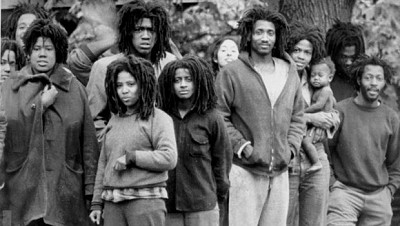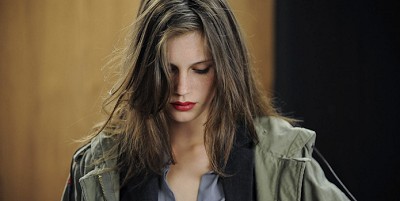Blue is the Warmest Color (Abdellatif Kechiche)
Abdellatif Kechiche and Blue is the Warmest Color have become more than a filmmaker and a film; before the film starts all the audience seems to talk about are the controversies, the fights with the cast, the fact that the film wasn’t as well received in Toronto as it was at Cannes. But then the film starts and all of that is gone.
Intensely emotional, Blue is a wonderful look at passion: the suddenness of it, the occasional inexplicability of it, the danger it poses to take over your whole life. Adèle is a stunning character… voracious, she cannot take anything but complete attention from Emma, the woman she passes on the street one day. In the lead role, Adèle Exarchopoulos arrives on the scene like a gunblast. I can’t remember the last time an unknown actress made such an entrance into the industry.
The film is a bit long and occasionally Kechiche wanders into some questionable scenery choices… I’m not sure that he is indeed a “dirty old man” as some have called him, the film is too solid for me and I give him a pass, but I understand where people are coming from.
Anatomy of a Paperclip (Ikeda Akira)
Next up was a screening of the winner of the Dragons & Tigers Award for emerging Asian filmmakers. This year’s winner is Ikeda Akira for the film Anatomy of a Paperclip. It’s a simple story; a quiet loner whose job is to make paperclips by hand has to find the courage to stand up to his menacing boss and the two local thugs who frequently torment him. Along the way he drinks some poisonous juice that makes him sick, and perhaps not coincidentally he suddenly finds a man and woman living in his apartment, one of whom will eventually cocoon herself as a butterfly would.
Is it all obvious metaphor? Absolutely, but that’s the point. As the woman metamorphoses on his floor, the man must also step up and change his life. Ikeda keeps everything lowkey, from the line delivery to the pacing, to repetition of scenes a la Hong Sang-Soo, but you can’t help rooting for the poor sap at the film’s core.
Let the Fire Burn (Jason Osder)
Jason Osder has put together a solid documentary in Let the Fire Burn, a look at the movement called MOVE that existed in Philadelphia in the ’70s and ’80s, and whose battle against the authorities culminated not just in their home being burned to the ground and many of them killed, but an entire neighbourhood burning, with 60+ homes lost.
Using found footage, and the video testimony from a Commission set up to study who was to blame for the disaster, Osder weaves a compelling tale, with no narration needed. It’s a tragic moment for the City of Philadelphia, and worth knowing about, but in the end Let the Fire Burn doesn’t offer anything beyond what the Commission already concluded. In short, this is an expert recap of events, but with no insight to add to the historical document.
Young & Beautiful (François Ozon)
The last film of the day was also my favourite, François Ozon’s Young & Beautiful. We follow 17-year-old Isabelle as she finds her sexuality and proceeds to explore what she can do with it. From her first sexual experience with a German teen while on holidays to the final scene where she is forced to reflect on her decision to turn tricks, the film keeps us in close with actress Marine Vacth and her frequently naked ways.
I have to wonder if the film will turn some viewers off. It does, after all, ask the viewer to accept an underage girl having sex with much older men for money, for no reason other than that she wants to. Her family life is comfortable, her parents loving, her school life a bore. Isabelle’s decisions are primal… there is a glint in Vacth’s eye that shows exploration, and so Ozon asks… will you judge? Will you accept her? Whichever you pick, the film ends up showing viewers an aspect of themselves more than anything about Isabelle. This is a wonderful film, and Ozon’s best direction yet.
